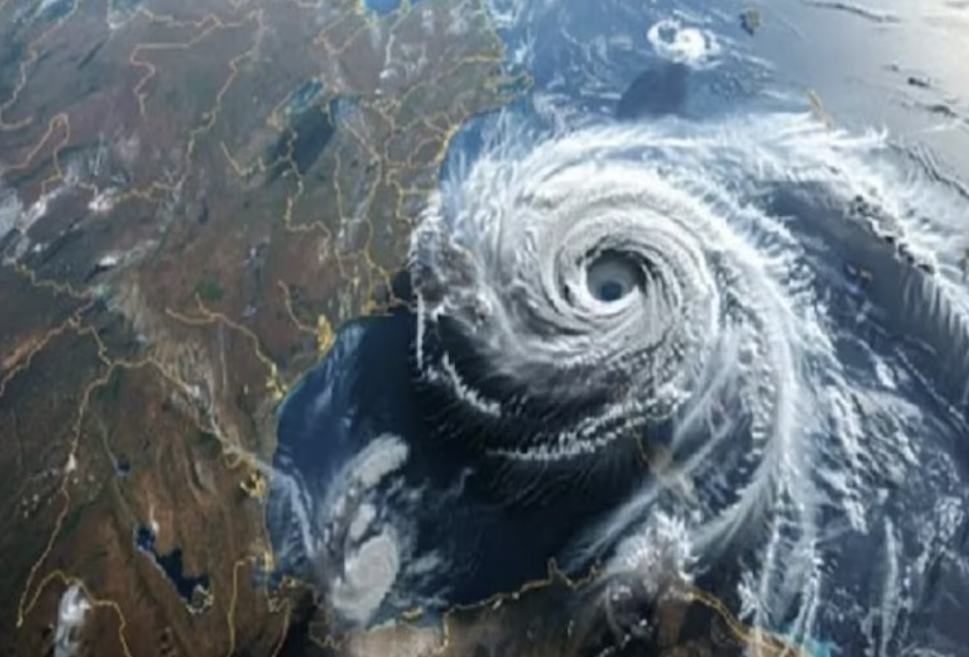Context:
Recently, a severe cyclonic storm, Cyclone Dana, intensified over the Bay of Bengal and made landfall on the coasts of Odisha near Bhitarkanika and Dhamra port.
About Cyclone Dana
- Nomenclature: The name Dana was chosen by Qatar according to the standard convention of naming tropical cyclones in the region. In Arabic, Dana means ‘generosity’.
- Formation: Cyclone Dana formed on 23rd October 2024, due to warm ocean waters and a low-pressure system, combined with favourable atmospheric conditions.
- Landfall: The cyclone struck the coasts of Odisha and West Bengal coast near Bhitarkanika National Park and Dhamra Port between the midnight of October 24 and the morning of October 25.
- Intensity: It made landfall as a severe cyclone, bringing winds of 100-110 km/h and gusts up to 120 km/h.
About Cyclones
- A cyclone is a large, rotating air system around a low-pressure centre, bringing intense storms and severe weather.
- Its spiraling winds move inward and rotate anticlockwise in the Northern Hemisphere, while rotating clockwise in the Southern Hemisphere.
Types: Classified into tropical and extratropical cyclones.
Tropical Cyclone: Tropical cyclones are those which develop in the regions between the Tropics of Capricorn and Cancer.
- Tropical cyclones are Earth’s most intense storms, fueled by the “latent heat” released when evaporated ocean water condenses into liquid.
- They gain strength over warm waters, drawing energy that drives their high winds and heavy rains.
- They are known as hurricanes in the Caribbean Sea, the Gulf of Mexico, the North Atlantic Ocean, and the eastern and central North Pacific Ocean. In the western North Pacific, they are called typhoons.
Extratropical Cyclone: Also known as mid-latitude cyclones, extratropical cyclones occur outside of the tropics. They typically form along fronts where cold and warm air masses meet.
Cyclones are also categorized by wind speeds and the degree of potential destruction:
- Low Pressure: Wind speeds below 31 km/h
- Depression: Wind speeds between 31–61 km/h
- Cyclonic Storm: Wind speeds between 62–88 km/h
- Severe Cyclonic Storm: Wind speeds between 89–117 km/h
- Very Severe Cyclonic Storm: Wind speeds between 118–167 km/h
- Extremely Severe Cyclonic Storm: Wind speeds between 168–221 km/h
- Super Cyclone: Wind speeds exceeding 221 km/h
Naming of Cyclones
Worldwide there are six regional specialised meteorological centres (RSMCs) and five regional Tropical Cyclone Warning Centres (TCWCs) mandated for issuing advisories and naming of tropical cyclones.
India Meteorological Department (IMD) is one of the six RSMCs to provide tropical cyclone and storm surge advisories to 13 member countries under the WMO/ESCAP Panel on Tropical Cyclones.
- 13 member countries: Bangladesh, India, Iran, Maldives, Myanmar, Oman, Pakistan, Qatar, Saudi Arabia, Sri Lanka, Thailand, United Arab Emirates and Yemen
In April 2020, the IMD released a list of 169 cyclone names, with each of the 13 member countries contributing 13 names.
The cyclone name list arranges member countries alphabetically, with each country’s suggested names listed alongside.
Then these names are allotted to any cyclone, which takes place in the region, on a rotational basis regardless of which country proposed it.

